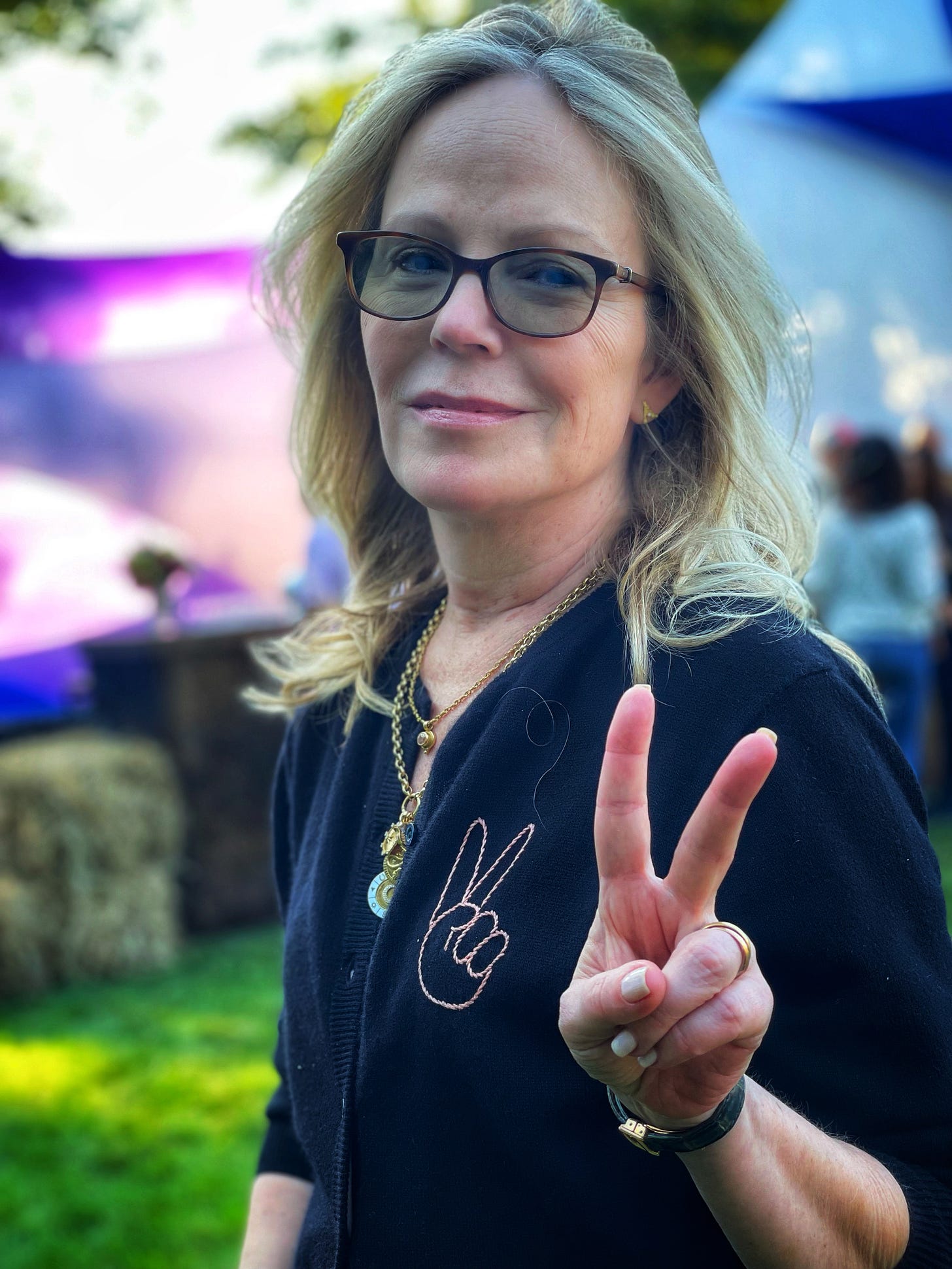Quiveringly Alive: A Conversation With Dani Shapiro
On the mysterious web of creation, secrets built of shame, handling stress, life after death, writing first drafts, and the importance of listening to your body.
Intimate conversations with our greatest heart-centered minds.
Dani Shapiro has long been a guiding light for many of us. Both her elegant, crisp, incandescent prose and her fervent curiosity about the inner workings of the human psyche juxtaposed with the tangle of this beautiful, troubled world.
In celebration of the paperback release of her brilliant novel Signal Fires, and because there are so many new subscribers, I thought it would be fun to share our earlier conversation. Dani, of course, says so many wise, tender, thoughtful, funny, and courageous things!
In 1985, fifteen-year-old Theo is driving his mother’s car, his sister Sarah is in the backseat, and her friend Misty, on whom Theo has a crush, is riding shotgun. When Theo drops a hot cigarette lighter down his shirt, he loses control of the car and crashes it into the majestic oak tree in front of their home. Theo and Sarah are unhurt, but Misty is unconscious. When their father, Dr. Ben Wilf, rushes out—moving Misty before realizing her neck is broken and that he’s done “the worst thing imaginable”—Sarah claims she was driving. A few days later, Misty dies. And then no one ever talks about it again.
Family secrets drive much of Dani’s work. What these characters are unable to discuss, manifests in addiction, loneliness, shame, self-hatred, and pain. But because it’s a Dani Shapiro novel there’s also the vigorous web of interconnectedness permeating everything. The sky, the trees, the ocean all lovingly envelope the Wilfs as they push forward with their lives. And the young family, the Shenkmans, who move in across the street become inextricably intertwined with theirs, particularly the son Waldo, protecting them in ways they couldn’t imagine. The signal fires are lit, the boats launched.
It’s a truly gorgeous interview. I hope you enjoy it!
Dani’s Advice on Craft
Write in the morning, read through in the afternoon. For more on writing and shaping early drafts, keep reading!
In Signal Fires time isn’t linear, both in the way that the sections are divided by years that don’t run chronologically and how within a scene past, present, and future are often happening simultaneously. What is your experience of time in your own life?
I've long been fascinated by time as a subject. I first started Signal Fires fifteen years ago with this notion that I wanted to tell the story backward in time. I wrote a little over 100 pages with these characters who I loved and knew so intimately. I wrote the section that took place in 2010 with Ben and Waldo. And I wrote the next section that took place on New Year's Eve of 1999. Then I ran out of runway, because you can't keep going backward in time—characters won't have been born yet. I couldn't figure it out, because I was so committed to that structure. So into the drawer it went.
Then a few things happened. One is that I came to understand a lot more about how to create a shattered narrative. I'm making it sound like it's all about craft, and it is about craft, but it's also how I started to come to think of time. I'm often conscious of myself being in a kind of liminal space; that the present feels in some way porous, able to be interrupted or impacted at any moment by both the future and the past. Memory isn’t linear, nor is it narrative. We carry all the selves we've ever been with us. I wanted to explore that looping of time that I sometimes feel.
When you have those moments where you feel porous, does that feel comfortable?
It feels like wholeness. It feels like connection. It feels larger than I am in a comforting way.
That's beautiful and leads perfectly to the next question. This is a story of the interconnectedness of the world and these two families, in particular. At one point young Waldo profoundly helps the neighbors across the street, whom he barely knows and without knowing they once saved his life, after which he says to his mother: “Everything is connected. Everything. The lady. The doctor. You. Me. It’s like we’re all part of a galactic supercluster.” And it’s not just the humans, it’s the sky, the stars, the majestic oak tree, nature herself. In the West, we often write off these intertwinings as coincidence. But do you believe in coincidence or is something greater afoot?




